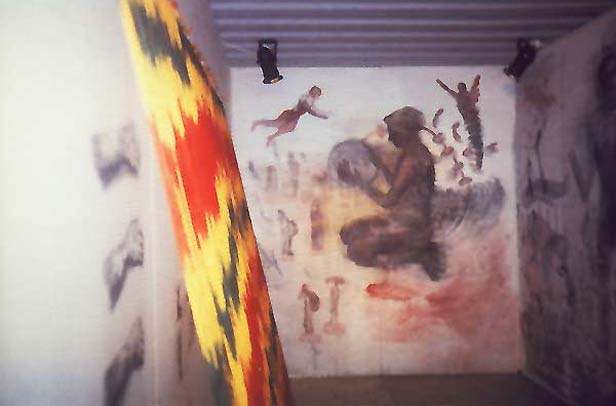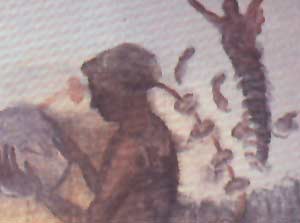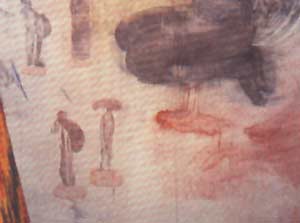 |
 |
 |
 |
 |
 |
 |
|
| 'Free'
Trade Installation , Acrylic Paint and charcoal on board, thread, coin and gold dust, 239x1415 cm, 1996 |
| Nalini
Malani in conversation with Kamala Kapoor K.K.: Could you explain the title of your intended work: 'Free'Trade? N.M.: Free trade, according to Winin Peri era and Jeremy Seabrook, authors of Global Parasites, a book that has had a lasting influence on my thinking, is "based on the neo-classical philosophy and framework of perfectly competitive markets in which resources are optimally allocated by the normal operation of market forces, and both buyers and sellers reap economic gains. |
 |
|
" The truth in this enterprise is quite different. There is little equal interdependence and interaction between trading countries if they happen to be One Third World and Two Third World countries. Powerful and economically advantaged countries often exploit free trade to source cheaper raw materials from the not so economically advantaged world,off load expensive finished goods there which are often useless to the local population, and maintain these countries in subservient development patterns. |
 |
|
K.K.: How do you hope to tackle these issues in your work? N.M.: As we have been offered a ship's container as a
site for installation, K.K.: Could you talk about the essential impetus in your planned installation 'Free' Trade, for Containers '96? NM.: The broad based idea for 'Free' Trade, is to try and make visible the cross currentsthat come about through exports and imports, e.g. the addiction to consumerism that has come about in the Two Third World, taking into account the undermining ramifications - including cultural subversion - this could have in the community at large.
"Free Trade", work made in situ in a ship's container |
K.K.: Such as? N.M.: Take the recent
invasion of consumer goods: Cardin fashion garments, Kentucky
N.M.: One idea that
I'm mulling over is that of 'one man leap-frogging over another,
|
| copyright
© 2004 Nalini Malani |
